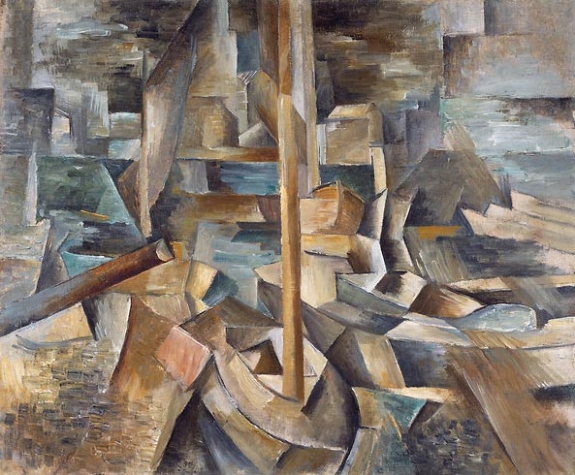The Acquavella Galleries’ splendid Georges Braque exhibition is a 42-gun salute to this pioneering French Modernist. The first large Braque survey to be staged in New York in more than 20 years, it musters a vigorous if compressed account of more than five decades of art making, with 42 paintings and collages, almost all top-notch. More than half have been borrowed from American and European museums; the rest come from private collections and in several cases have not been on public display in quite some time.
This show means to establish Braque’s importance in a town where Picasso, his flamboyant partner in the development of Cubism, which set so much of 20th-century art in motion, looms very large. How large? The Museum of Modern Art’s Web site places the number of works by Braque in its collection at 31. The number by Picasso (sitting down?) is 1,211. Picasso was inordinately talented and important, but 40 times more so than Braque?
Organized by Dieter Buchhart, an Austrian critic, art historian and independent curator, the Acquavella show rarely lets down its guard. In nearly every effort Braque is at his most elaborate and ambitious, from his slightly over-heated Fauvist efforts of 1906-7 to his opulent still lifes of the 1930s and ’40s and his crowded and shadowy studio interiors of the 1950s. In the show’s middle portion, of course, we see Braque the Cubist.
His collaboration with Picasso began in earnest after he first saw the groundbreaking “Demoiselles d’Avignon” in Picasso’s studio in late 1907. But by then Braque was already alert to the implications of Cézanne’s angled brush strokes and multiple perspectives and the tantalizing way they destabilized painting’s traditional unities of form and space, and therefore time.
Braque would later say that he and Picasso were roped together like mountaineers in their invention of Cubism. Picasso saw things a bit differently, referring to Braque as “ma femme,” or “my wife.” Either way, their intensely close collaboration lasted until the fall of 1914, when Braque enlisted in the French Army early in World War I. They went their separate ways and, like many divorced couples, rarely spoke of each other.
They could not have been more different. Braque’s father was a house painter and decorator who made sure that his son learned the artisanal skills of his trade; Picasso’s was an academic painter who gave him drawing lessons.
Braque was tall, reticent, methodical and quintessentially French, with all that that implies in terms of reason and balance. He dressed in a neat, discreetly dandyish way, was intensely private, remained married to the same woman all his life and worked in the same studio from 1926 until his death in 1963, at 81.



